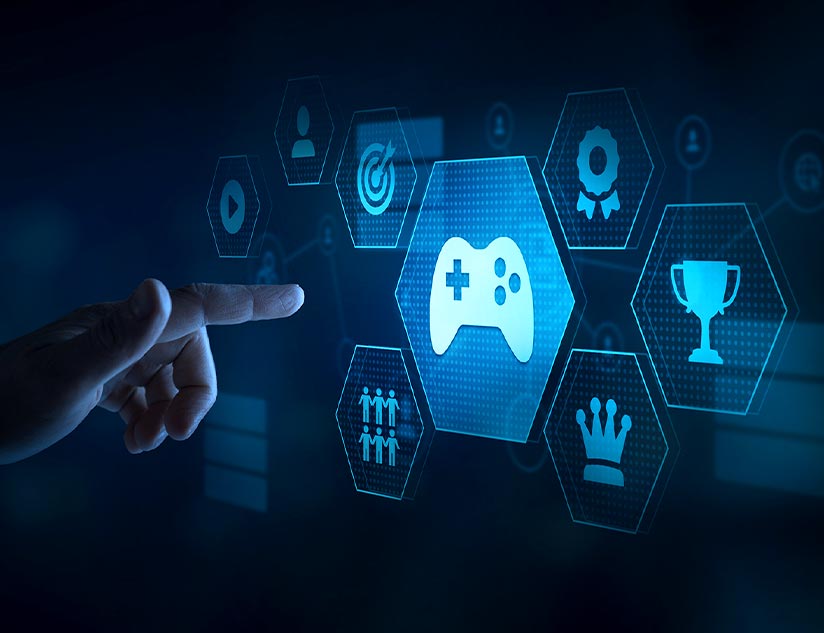Games are the activities that are loved by people from all age group. Over the years, teachers have been working hard to make learning interesting. The intent of bringing change in the way things were being taught was to ensure that the kids are motivated to learn. With time, the eLearning industry tried to discover a new way of learning and on its journey to bring in change, invented new techniques of engaging users.
One of the technique(s) that is being approached is “Gamification“. When you go to any conference, you come across the Gamification buzz words and most of the times we are unable to relate it to learning. We have created this perception around ourselves which talks about Gamification as a synonym for Games and FUN (which means no learning). It’s a common notion that Games are not an appropriate medium for adult learners and fun is sometimes counterproductive.
But before we move further towards conclusions let’s try to understand what is Gamification and how is it defined in eLearning. When we talk about gamification, most of us think it as a way of implementing games in an eBook or jazzing things up. It is looked as a medium to entertain the end user with creative animations and images.
But is it what Gamification means. Does it mean to add game templates in eBooks and let the user enjoy?
Well, the answer is “No“. Gamification is about applying the mechanism and concepts of gamification in eLearning not just adding a game template. The concept of gamification is to motivate the learner to learn and to do something that they have not done earlier. It promotes performance-based learning and its intent has always been around motivation. Motivation is a sense of achievement and the feeling of accomplishment that is further supported with a reward.
Gamification as a concept is an interesting challenge to have for Content authors and creators. The authors always plan to create interactivities that look like games but are not exactly a game, this helps in making the user understand the learning concept without adding bulk animations. In the eLearning environment, there have been many products like LMSes, Content distribution platforms that have started understanding the power of gamification. The introduction of the concept of badges, points, and animations in content has been one of the popular content creation approach and of gamification.
Recently we build a mechanism in the content which was uploaded on MagicboxTM (https://www.getmagicbox.com/) for Junior Explorers (explorers.juniorexplorers.com). The content and product had a combination of chapters and animations. These animations and gamification tools promoted users to go on an expedition to African forests. While the learners learned about the wildlife in the forest through the amazing animations, they received maps, badges, and goodies on their way after the completion of each level. Hence the feeling of instant gratification and the motivation to achieve more.
It is very important to plan and understand how to keep the user motivated. From games like Candy crush to Mission to Mars courses are excellent examples of reward-based learning which grow user motivation. Gamification can affect learning via one of two processes and is intended to guide decision-making when creating gamified activities. Gamification should not be intended just to “get people to learn,” and gamification cannot replace high-quality instruction. Instead, it should be targeted at learner behavior and attitudes. This means that the focus has to be on the performance and behavior of the user rather than the knowledge.
As I had mentioned earlier, gamification has a direct connection with motivation and to keep users motivated, one would have to either give out either extrinsic rewards (which are tangible like Certificates, promotions) or intrinsic rewards (e.g. after completion, of the course your skillset gets enhanced by X%). It is also important to analyze the type of gamification one needs which is based on the target audience. For example, for learners from Grade 4, an ebook may have badges, points, maps, timers etc. These motivate the users to move up each level to achieve the highest badges and ensure performance-based learning. A similar set of gamification is being done for adult learners (e.g. in military training where VR simulations are created for users).
Gamification is only about encouraging the users to do their best and motivate them. Goal-setting theory is one of the well-supported theories of motivation in psychology, and it applies well to learning. People are motivated by SMART goals: specific, measurable, attainable, realistic, and time-bound. These things basically don’t mean anything and there is no value in them, however, winning and getting these badge or credits gives a user a sense of achievement.
However, it is important that while creating the content, the author needs to analyze the end user’s need carefully. Applying the concepts of gamification depends on the audience, time in hand for implementation (you have to look at your content delivery dates) and the type of content. In short focus on the business goal, the end user, and the objective for the content to yield performance.









